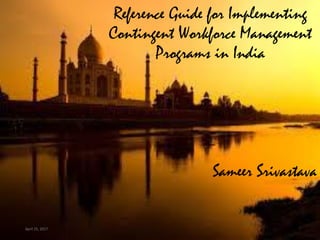The document serves as a comprehensive reference guide for implementing contingent workforce management (CWM) programs in India, discussing the economic landscape, compliance challenges, and invoicing procedures. It emphasizes the complexity of India’s labor market, the need for understanding local taxation laws, and the importance of effective vendor management practices. Key sections address economic outlook, taxation requirements, vendor management systems (VMS), and the implications of various invoicing models on cash flow.

































